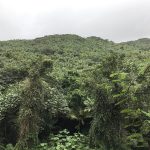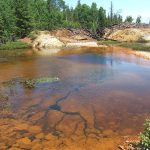What is it?
- Aquatic ecosystems refer to plant and animal communities occurring in water bodies.
Classification
- Freshwater Ecosystems:
-
- Land water which is continuously cycling and has low salt content (always less than 5 ppt), is known as fresh water.
- There are Two Types of Freshwater Ecosystems:
- Static or Still Water (Lentic) Ecosystems: For example, pond, lake, bogs and swamps.
- Running Water (Lotic) Ecosystems: For example, springs, mountain brooks, streams and rivers.
- Marine Ecosystems:
- The water bodies containing salt concentration equal to or above that of seawater (i.e., 35 ppt or above).
- Example: Shallow seas and open ocean.
- Brackish Water Ecosystems:
- These water bodies have salt content in between 5 to 35 ppt.
- For Example: Estuaries, salt marshes, mangrove swamps and forests.
Aquatic Organisms
- Neuston: These organisms live at the air-water interface, e.g. floating plants.
- Periphyton: These are organisms which remain attached to stems and leaves of rooted plants or substances emerging above the bottom mud such as sessile algae.
- Plankton: Microscopic floating organisms such as algae, diatoms, protozoans and larval forms are called plankton. This group includes both microscopic plants like algae (phytoplankton) and animals like crustaceans and protozoans (zooplankton).
- Nekton: This group contains powerful swimmers that can overcome the water currents.
- Benthos: The benthic organisms are those found living at the bottom of the water mass.
Factors Limiting the Productivity of Aquatic Habitats
- Light Availability: Decreased light penetration with depth and turbidity limits photosynthesis. Based on light penetration and plant distribution they are classified as photic and aphotic zones.
- Photic Zone: Photic (or “euphotic”) zone is the portion that extends from the lake surface down to where the light level is 1% of that at the surface. The depth of this zone depends on the transparency of water. Photosynthetic activity is confined to the photic zone. Both photosynthesis and respiration activity takes place.
- Aphotic Zone: The lower layers of the aquatic ecosystems, where light penetration and plant growth are restricted forms the aphotic zone (profundal zone). Only respiration activity takes place in this zone. The aphotic zone extends from the end of the photic zones to bottom of the lake.
- Nutrient Availability: Essential nutrients like nitrogen and phosphorus are often limited.
- Temperature: Affects metabolic rates and enzyme activity necessary for growth.
- Dissolved Oxygen: Low oxygen levels can limit survival and productivity of aquatic organisms.
- Salinity: Influences the types of organisms that can thrive in various water bodies.
- Water Flow and Currents: High or low flow rates can affect nutrient distribution and organism survival.
- Pollution: Chemical contaminants and nutrient runoff can be toxic and cause eutrophication.
- Biological Interactions: Predation, competition, disease, and parasites can limit population growth.
- Human Activities: Overfishing and habitat destruction disrupt food webs and ecosystems.
- Climate Change: Alters temperatures, sea levels, and ocean acidity, impacting species and ecosystems.


